Assessing and diagnosing patients with schizophrenia, other psychotic disorders, and medication-induced movement disorders is an essential skill for nursing students. The Week 7 Assignment requires students to apply diagnostic reasoning, utilize DSM-5 criteria, and conduct thorough patient interviews while recording relevant information. Understanding these concepts and applying them correctly can be challenging. Below is a sample assignment we have solved, demonstrating how to approach these complex diagnostic tasks, along with tips and support for similar assignments.
Week 7: Schizophrenia and Other Psychotic Disorders; Medication-Induced Movement Disorders
Assignment: Assessing and Diagnosing Patients With Schizophrenia, Other Psychotic Disorders, and Medication-Induced Movement Disorders
At age 18, Rose rented her first apartment in the city. Although she had a short commute to work, Rose did not enjoy the chaos and noise of the city. Within months, Rose left her apartment in the city for a small, rural cabin in the country. It was then that Rose began to withdraw from family and friends. Generally, she avoided contact with others. Her co-workers noticed random, obscure drawings on scrap paper at her desk. Additionally, her co-workers noticed other strange behaviors. Frequently, Rose would whisper to herself, appear startled when people approached her desk, and stare at the ceiling at various times throughout the day.
For individuals with disorders such as schizophrenia and other psychotic disorders, the development of mental disorder seldom occurs with a singular, defining symptom. Rather, many who experience such disorders show a range of unique symptoms. This range of symptoms may impede an individual’s ability to function in daily life. As a result, clinicians address a patient’s ability or inability to function in life.
This week, you explore psychotic disorders, including schizophrenia. You also explore medication-induced movement disorders and formulate a diagnosis for a patient in a case study.
Learning Objectives
Students will:
- Apply concepts, theories, and principles related to patient interviewing, diagnostic reasoning, and recording patient information
- Formulate differential diagnoses using DSM-5 criteria for patients with schizophrenia, other psychotic disorders, and medication-induced movement disorders across the life span
Learning Resources
American Psychiatric Association. (2013). Medication-induced movement disorders and other adverse effects of medication. In Diagnostic and statistical manual of mental disorders (5th ed., pp. 709–714).
American Psychiatric Association. (2013). Schizophrenia spectrum and other psychotic disorders. In Diagnostic and statistical manual of mental disorders (5th ed.). Arlington, VA: Author. doi:10.1176/appi.books.9780890425596.dsm02
Sadock, B. J., Sadock, V. A., & Ruiz, P. (2015). Kaplan & Sadock’s synopsis of psychiatry (11th ed.). Wolters Kluwer.
- Chapter 7, Schizophrenia Spectrum and Other Psychotic Disorders
- Chapter 29.2, Medication Induced-Movement Disorders
- Chapter 31.15, Early-Onset Schizophrenia
Required Media
Classroom Productions. (Producer). (2016). Schizophrenia and other psychotic disorders [Video]. Walden University.
MedEasy. (2017). Psychotic disorders | USMLE & COMLEX [Video]. YouTube. https://www.youtube.com/watch?v=BdB6MgWAP1k.
Video Case Selections for Assignment (click to expand/reduce)
Select one of the following videos to use for your Assignment this week. Then, access the document “Case History Reports” and review the additional data about the patient in the specific video number you selected.
Symptom Media. (Producer). (2016). Training title 9 [Video]. https://video-alexanderstreet-com.ezp.waldenulibrary.org/watch/training-title-9
Symptom Media. (Producer). (2016). Training title 24 [Video]. https://video-alexanderstreet-com.ezp.waldenulibrary.org/watch/training-title-24
Symptom Media. (Producer). (2016). Training title 29 [Video]. https://video-alexanderstreet-com.ezp.waldenulibrary.org/watch/training-title-29
NRNP 6635 Symptom Media. (Producer). (2018). Training title 134 [Video]. https://video-alexanderstreet-com.ezp.waldenulibrary.org/watch/training-title-134
Psychotic disorders and schizophrenia are some of the most complicated and challenging diagnoses in the DSM. The symptoms of psychotic disorders may appear quite vivid in some patients; with others, symptoms may be barely observable. Additionally, symptoms may overlap among disorders. For example, specific symptoms, such as neurocognitive impairments, social problems, and illusions may exist in patients with schizophrenia but are also contributing symptoms for other psychotic disorders.
For this Assignment, you will analyze a case study related to schizophrenia, another psychotic disorder, or a medication-induced movement disorder.
To Prepare:
- Review this week’s Learning Resources and consider the insights they provide about assessing and diagnosing psychotic disorders. Consider whether experiences of psychosis-related symptoms are always indicative of a diagnosis of schizophrenia. Think about alternative diagnoses for psychosis-related symptoms.
- Download the Comprehensive Psychiatric Evaluation Template, which you will use to complete this Assignment. Also review the Comprehensive Psychiatric Evaluation Exemplar to see an example of a completed evaluation document.
- By Day 1 of this week, select a specific video case study to use for this Assignment from the Video Case Selections choices in the Learning Resources. View your assigned video case and review the additional data for the case in the “Case History Reports” document, keeping the requirements of the evaluation template in mind.
- Consider what history would be necessary to collect from this patient.
- Consider what interview questions you would need to ask this patient.
- Identify at least three possible differential diagnoses for the patient.
By Day 7 of Week 7
Complete and submit your Comprehensive Psychiatric Evaluation, including your differential diagnosis and critical-thinking process to formulate primary diagnosis.
Incorporate the following into your responses in the template:
- Subjective: What details did the patient provide regarding their chief complaint and symptomology to derive your differential diagnosis? What is the duration and severity of their symptoms? How are their symptoms impacting their functioning in life?
- Objective: What observations did you make during the psychiatric assessment?
- Assessment: Discuss the patient’s mental status examination results. What were your differential diagnoses? Provide a minimum of three possible diagnoses with supporting evidence, listed in order from highest priority to lowest priority. Compare the DSM-5 diagnostic criteria for each differential diagnosis and explain what DSM-5 criteria rules out the differential diagnosis to find an accurate diagnosis. Explain the critical-thinking process that led you to the primary diagnosis you selected. Include pertinent positives and pertinent negatives for the specific patient case.
- Reflection notes: What would you do differently with this client if you could conduct the session over? Also include in your reflection a discussion related to legal/ethical considerations (demonstrate critical thinking beyond confidentiality and consent for treatment!), health promotion and disease prevention taking into consideration patient factors (such as age, ethnic group, etc.), PMH, and other risk factors (e.g., socioeconomic, cultural background, etc.).
Submission and Grading Information
To submit your completed Assignment for review and grading, do the following:
- Please save your Assignment using the naming convention “WK7Assgn+last name+first initial.(extension)” as the name.
- Click the Week 7 Assignment Rubric to review the Grading Criteria for the Assignment.
- Click the Week 7 Assignment link. You will also be able to “View Rubric” for grading criteria from this area.
- Next, from the Attach File area, click on the Browse My Computer button. Find the document you saved as “WK7Assgn+last name+first initial.(extension)” and click Open.
- If applicable: From the Plagiarism Tools area, click the checkbox for I agree to submit my paper(s) to the Global Reference Database.
- Click on the Submit button to complete your submission.
Receive Expert Guidance for Your Assignment
The Week 7 Assignment on diagnosing schizophrenia and other psychotic disorders can be a complex challenge. If you're struggling to apply diagnostic reasoning or formulate accurate differential diagnoses, our expert assistance can help simplify the process. Here’s how we can assist you:
- Clarifying Diagnostic Reasoning: Receive guidance on using diagnostic reasoning to assess symptoms and create accurate differential diagnoses.
- Using DSM-5 Criteria Effectively: Learn how to apply DSM-5 criteria to accurately diagnose mental health disorders, including schizophrenia and psychotic disorders.
- Patient Interviewing Techniques: Get tips on how to conduct thorough and effective patient interviews to gather essential diagnostic information.
- Accurate Documentation: Receive help with documenting patient data clearly and professionally in line with academic standards.
- Personalized Support: Get expert help tailored to your specific assignment requirements, helping you stay on track and meet academic expectations.
With personalized guidance and expert support, you’ll gain the skills needed to confidently complete your Week 7 Assignment and improve your diagnostic reasoning. If you need additional help, you can opt for our expert assistance to ensure the success of your assignment.



